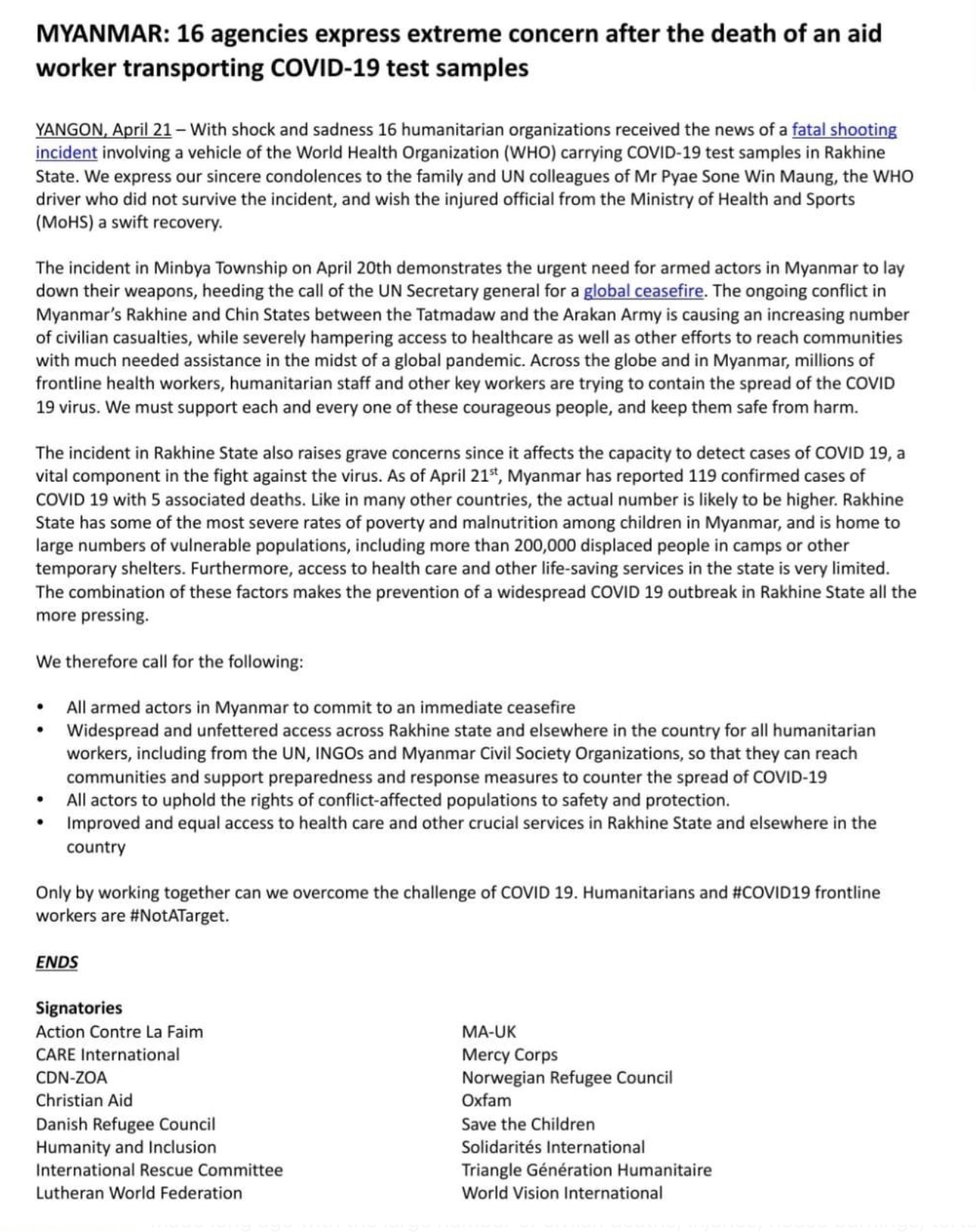Killing the humanitarian space

Far from sacred
The international press is reporting today that a WHO (World Health Organization) vehicle carrying COVID-19 test swabs from Sittwe to Yangon was fired upon and the driver was killed. The bullet taken from the body appears to be a M-23 (machine gun) slug produced by the Myanmar defense factory. There is little doubt this round was fired by a Tatmadaw [Myanmar military] soldier. Here is an article from the local press describing the incident in more detail, with both sides, the AA and the Tatmadaw being blamed.
Here is one definition of the ‘humanitarian space’:
“’Humanitarian space’ refers to an operational environment that allows humanitarian actors to provide assistance and services according to humanitarian principles and in line with international humanitarian law.” (OCHA, United Nations Office for the Coordination of Humanitarian Affairs)
In this ‘civil war’ between the Arakan Army and the Tatmadaw it is clear that the humanitarian space, once respected in conflict zones around the globe, is not at all sacred. Indeed, I wonder what the Tatmadaw does hold sacred except for the hyper nationalistic and racist myths chanted like so many false prayers by their leaders.
All news can be spun, and in a statement from State Counselor Aung San Suu Kyi says she is very proud for those on the front line, including Tatmadaw officers and soldiers who are carrying out their responsibilities and that she is very sorry for the loss of civilians and damage.
“With shock and sadness”
The shrinking of the humanitarian space has been happening for decades, and there may be little that can be done to reverse this downward spiral.
Recent events in Myanmar clearly give distressing signals, and the international humanitarian community is responding immediately and  demonstratively to this most recent incident. Here is the statement that was issued today (21 April). The call for a global ceasefire by the UN seems to have had limited impact both in Myanmar and elsewhere.
demonstratively to this most recent incident. Here is the statement that was issued today (21 April). The call for a global ceasefire by the UN seems to have had limited impact both in Myanmar and elsewhere.
In response to the joint statement made by these 16 INGOs one humanitarian worker asked,
“I fully agree with and welcome the statement by INGOs above but wonder why it wasn’t made long ago with the large number of civilan deaths, injuries, house burnings, torture etc.”
There will be other reactions (the Embassy of Canada to Myanmar‘s Fascebook page, for example), but the question remains whether these statements will make any substantive difference in either the short or long run.
Note: I will be updating this post in the coming hours ands days.


 Follow
Follow